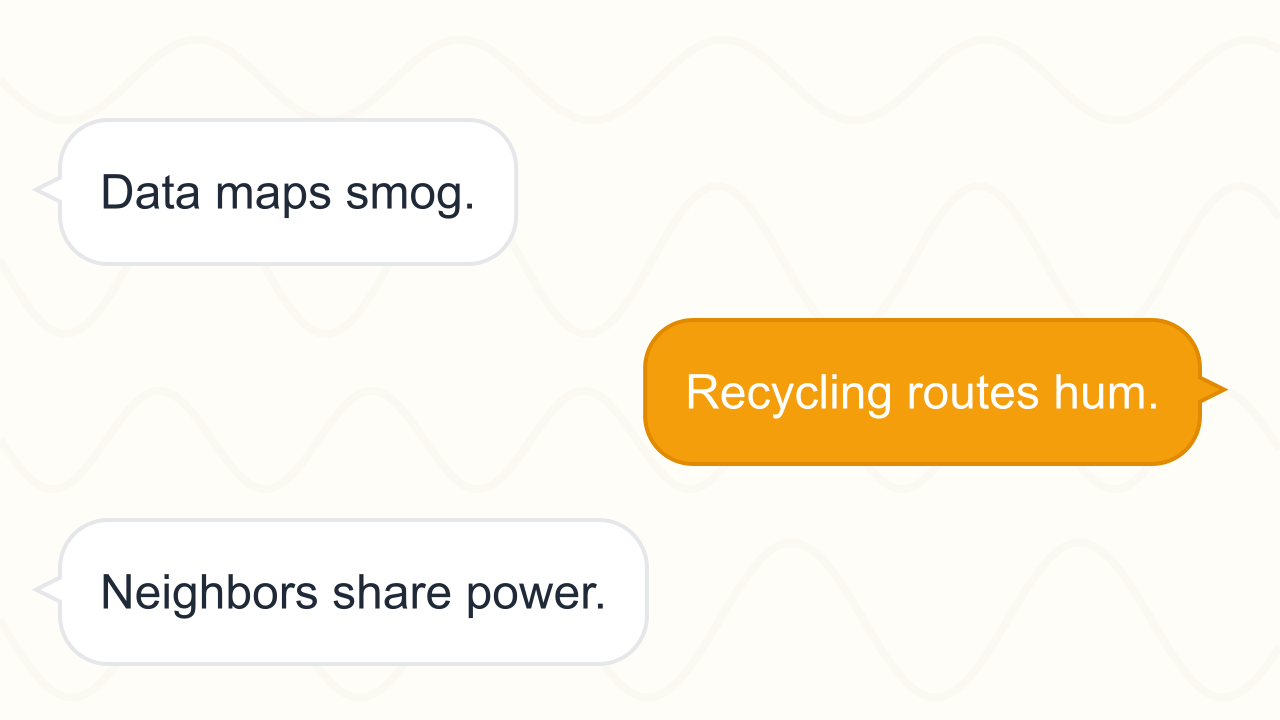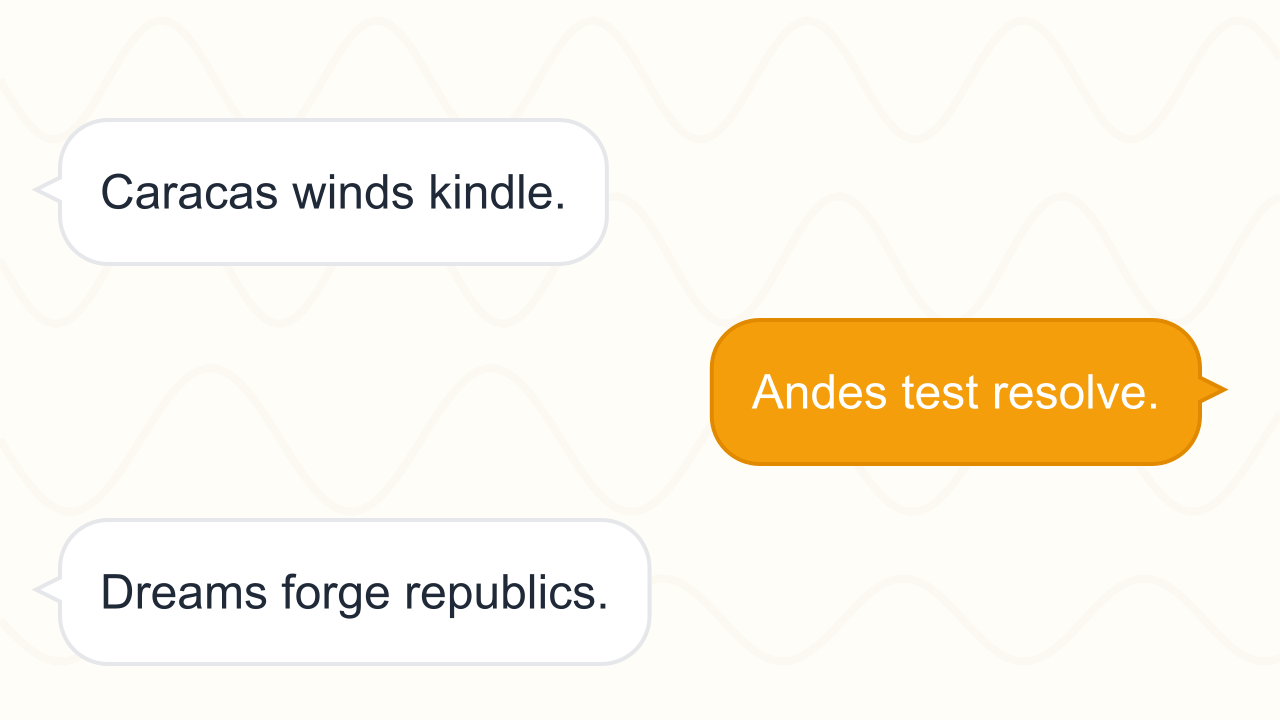Mahatma Gandhi: Path of Nonviolence reading Exercise
Follow Mohandas K. Gandhi from his studies in London to civil rights campaigns in South Africa and leadership of India’s independence movement, tracing how nonviolent resistance reshaped global politics.
Exercise Guide
How to complete:
Read the three passages in order; each covers a pivotal phase in Gandhi’s public life. Track dates, locations, and strategies he used. After reading, answer the questions—some focus on factual recall, while others ask you to interpret vocabulary, tone, or the broader significance of his campaigns.
Success tips:
These passages weave biography with political history. Pay attention to how Gandhi links personal discipline, community organizing, and international awareness.
- Highlight key events (South African protests, Champaran, Salt March) and note their outcomes.
- Use context clues to interpret vocabulary such as "satyagraha" or "civil disobedience."
- Compare Gandhi’s tactics with the government responses in different decades.
- Watch for quotations that reveal tone—resolute, conciliatory, or urgent.
- Summarize each passage to connect Gandhi’s philosophy with shifts in colonial policy.
Knowledge:
This biography highlights the evolution of nonviolent resistance, the role of mass mobilization in anticolonial movements, and the interplay between local reforms and global opinion. You will practice extracting evidence, analyzing vocabulary in context, and evaluating leadership decisions.
Complete the Exercise
Reading Passage 1
Mohandas Karamchand Gandhi was born in 1869 in the coastal city of Porbandar and raised in Rajkot, where his father served as a Diwan, or chief minister. Determined to practice law, Gandhi sailed to London in 1888, studied at the Inner Temple, and observed how the British legal system balanced statute and precedent. In 1893 he accepted a one-year contract in the Natal Province of South Africa, intending to return to India after earning experience in commercial law.
South Africa transformed his plans. Gandhi was ejected from a first-class train compartment despite holding a valid ticket, an incident that revealed the racial discrimination written into colonial statutes. He stayed to organize Indian merchants and laborers, founding the Natal Indian Congress in 1894 to campaign against punitive taxes and registration laws. Drawing on Hindu, Jain, and Christian teachings, Gandhi articulated satyagraha—"truth-force"—a disciplined insistence on civil rights through nonviolent resistance.
By 1914 his campaigns had secured compromises on poll taxes and marriage recognition for Indian couples. He returned to India with a reputation as an ethical reformer who combined legal argument with moral pressure. Indian nationalists—among them Gopal Krishna Gokhale—encouraged him to tour villages before entering national politics so he could understand the daily struggles of farmers, textile workers, and students.
Why did Gandhi initially travel to London in 1888?
Which event in South Africa shifted Gandhi’s focus from commercial law to civil rights?
What was the primary purpose of the Natal Indian Congress founded in 1894?
Which term best captures the philosophy Gandhi developed during his South African years?
Why did Indian nationalists urge Gandhi to tour rural India upon his return in 1915?
Reading Passage 2
Between 1917 and 1922 Gandhi emerged as a national leader by aligning local grievances with broader demands for self-rule. In Champaran, Bihar, he investigated indigo planters who forced tenants into unfair contracts and launched a campaign that secured relief through negotiated settlement. In Ahmedabad he fasted to support mill workers seeking a living wage, persuading owners to accept arbitration. These victories demonstrated that satyagraha could address economic as well as civic injustices.
Gandhi linked these local struggles to the Non-Cooperation Movement of 1920, urging Indians to boycott British schools, law courts, textiles, and honors. He promoted swadeshi—domestic industry—symbolized by spinning khadi cloth on the charkha. Though he condemned violence, unrest in Chauri Chaura in 1922 led to the death of police officers, prompting Gandhi to suspend the campaign, accept arrest, and serve two years in prison for sedition.
Imprisonment did not end his influence. Upon release he reorganized the Indian National Congress to include village representatives, women’s groups, and youth leagues. He also championed Hindu-Muslim unity during the Khilafat movement, arguing that independence required cooperation across religious and regional lines. His blend of moral appeal and practical organizing laid the groundwork for future mass actions.
How did the Champaran investigation demonstrate Gandhi’s approach to reform?
What economic strategy did Gandhi champion through the Non-Cooperation Movement?
Why did Gandhi suspend the Non-Cooperation Movement in 1922?
How did Gandhi broaden the Indian National Congress after his release from prison?
What does Gandhi’s support for the Khilafat movement reveal about his strategy?
Reading Passage 3
In 1930 Gandhi launched the Salt March, walking 240 miles from Sabarmati Ashram to Dandi to protest Britain’s monopoly on salt production. Tens of thousands joined the satyagraha, harvesting salt from the sea in open defiance of colonial law. International newspapers covered the march, amplifying Gandhi’s argument that basic necessities should not be taxed to enrich an imperial power.
The British arrested over 60,000 protesters, including Gandhi, yet global opinion began to shift. Leaders from Europe and the United States praised the discipline of the marchers, and Viceroy Lord Irwin entered negotiations, resulting in the 1931 Gandhi-Irwin Pact that allowed civil disobedience prisoners to be released and granted limited concessions. Still, talks at the Second Round Table Conference in London later that year stalled over constitutional questions and safeguards for minorities.
During World War II Gandhi opposed India’s automatic inclusion in the conflict without consultation. In 1942 he launched the Quit India movement, calling for immediate independence and refusing to support the war effort unless Britain promised self-rule. He spent most of the war imprisoned with other Congress leaders. Gandhi emerged in 1944 to prevent communal violence as independence approached, but he was assassinated on 30 January 1948 by Nathuram Godse, a Hindu nationalist who opposed his message of reconciliation.
What made the Salt March of 1930 a powerful symbol of resistance?
How did international reaction influence events after the Salt March?
Why did Gandhi launch the Quit India movement in 1942?
Which statement best describes Gandhi’s priorities after his release in 1944?
What tragic event concluded Gandhi’s life, and what does it reveal about post-independence tensions?
Share this exercise
Help others learn reading by sharing this exercise
Related Exercises

Designing Regenerative Networks for Future Neighborhoods
Trace how innovators, residents, and policymakers build interconnected solutions that cut pollution, expand recycling, and redesign everyday systems across six detailed case studies.

Clean Cycles for Tomorrow
Discover how neighborhoods reinvent waste systems, deploy new materials, and empower residents to shrink pollution footprints while expanding recycling access.

Pollution and Recycling: Restoring Our Cities
Explore how air, water, and waste pollution affect urban life, and examine the recycling innovations and community actions working to clean cities around the world.

Simón Bolívar: Liberator of the Andes
Journey with Simón Bolívar from his Caracas youth through daring Andean campaigns and the struggle to define lasting republics across northern South America.

Wu Zetian: Mandate of the Tang
Follow Wu Zetian’s ascent from a palace attendant to emperor of the Zhou dynasty, examining how she wielded scholarship, alliances, and reform to shape eighth-century China.